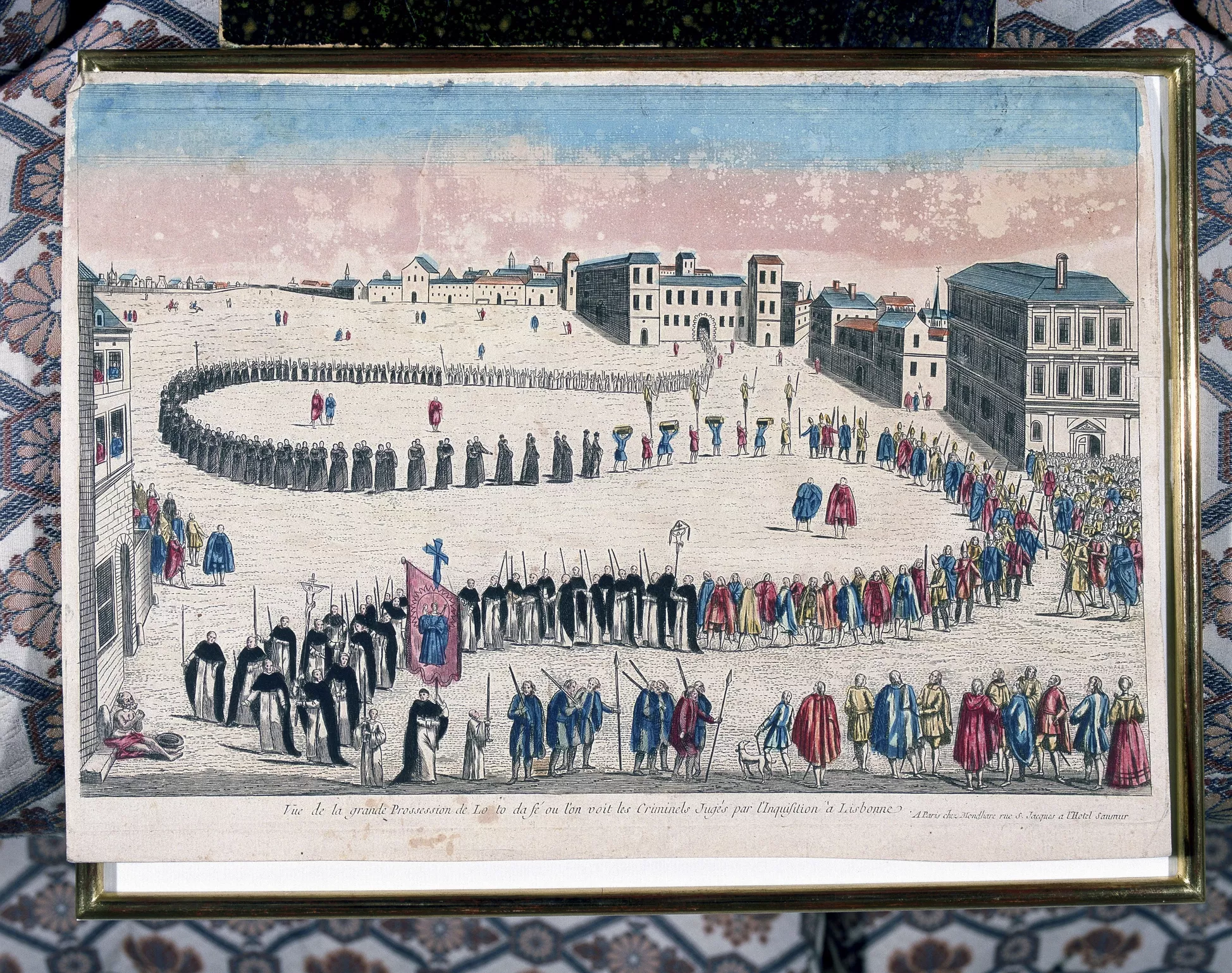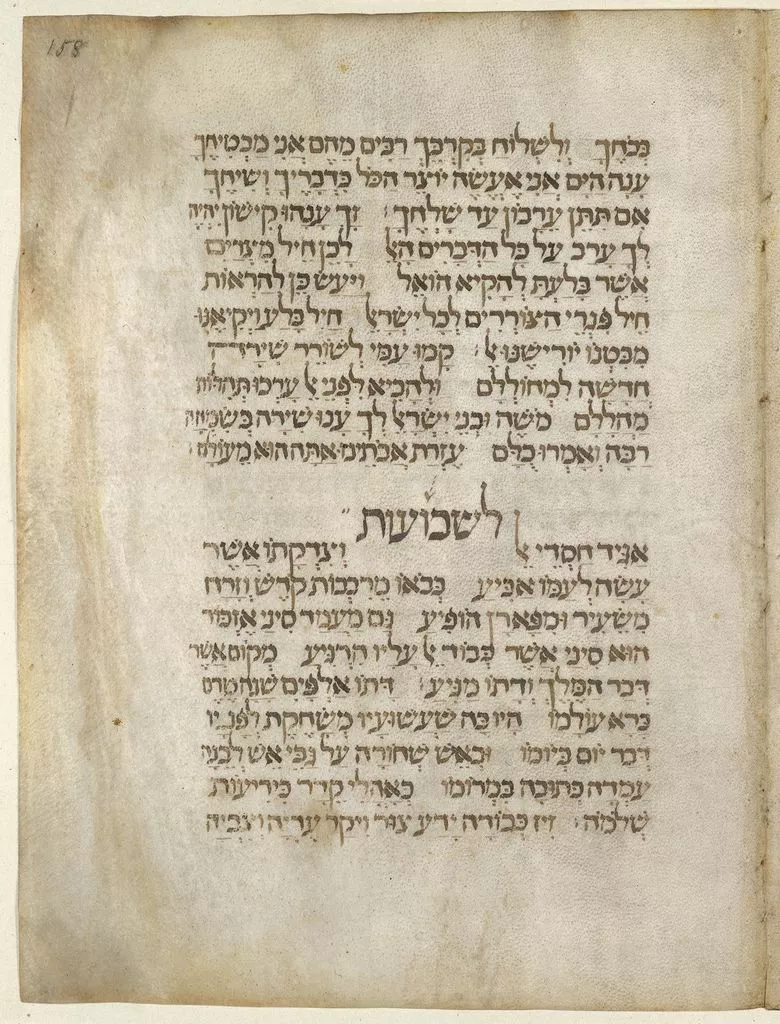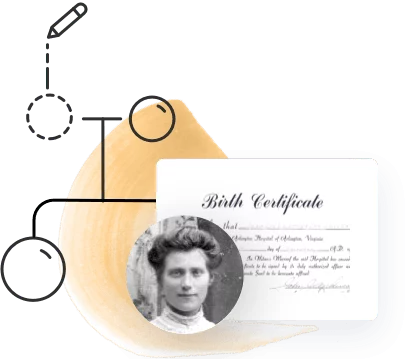
Do you have Spanish surnames in your family that you suspect might have converso origins? Or odd practices in your Catholic Hispanic family that might point to Sephardic roots? In this article, we’ll explore the mysterious and complex identity of Spanish and Portuguese conversos and how you can identify them in your family tree.
Who were the conversos?
The word converso simply means “convert,” but this term generally refers to Jewish converts to Christianity on the Iberian peninsula from the 14th century onward.
A very significant Jewish community lived on the Iberian peninsula, dating back to before the Roman invasion and ending with the expulsion of the Jews from Spain in 1492. During the late Middle Ages, especially as a result of the terrible riots and massacres that devastated Jewish communities across the region in 1391, many Jewish families living there converted to Christianity. There were a number of reasons they may have done so:
- Forced conversion: Especially during riots and massacres — which unfortunately were not infrequent — many Jewish people were given the choice between conversion and death. In other cases, they were not given a choice at all: they were baptized against their will, and according to Catholic doctrine at the time (up until after World War II), even a person who is baptized against his or her will must live as a Christian from then on.
- Voluntary conversion: Some Jewish people chose to convert out of their own free will. They may have done so for genuine religious reasons — that is, they believed that Christianity was the truth — or due to practical considerations. The laws in Spain and Portugal at the time were discriminatory against people of the Jewish faith, and adopting a Christian identity meant greater social and financial opportunities.
These new converts were known as conversos, “new Christians,” or — derogatorily — marranos. “Marrano” means “swine.” This nickname was used because many of them made a point of eating or displaying pork publicly to show that they had abandoned their Jewish traditions (which strictly forbid the consumption of pork).
Note that though the terms “conversos,” “crypto-Jews,” “marranos,” and “anusim” are often used interchangeably, they do not have the same meaning.
- Converso: Spanish for “convert.” A person who converted, whether voluntarily or involuntarily.
- Marrano: Spanish for “swine.” An insulting term for a convert.
- Crypto-Jew: a person who practices Judaism in secret.
- Anus: “forced one” in Hebrew (“anusim” in plural). A person who was forcibly converted.
Conversos were not necessarily crypto-Jews: they may have converted, but not practiced Judaism in secret. Crypto-Jews weren’t necessarily anusim: they may have practiced Judaism in secret, but not have been forced to convert. “Marrano” has become an accepted synonym for “converso,” but given its insulting origins, many prefer to avoid it.
Historians argue as to how many of the conversions were forced versus how many were voluntary. There is also a debate among scholars regarding how many of these conversions were sincere and how many were not. It’s very hard to tell because of what came next: the Spanish Inquisition.
Conversos and the Spanish Inquisition
The institution of the medieval inquisition existed for centuries before Queen Isabel I and her confessor, Don Tomás de Torquemada, established the Spanish Inquisition in 1478. What Torquemada did was organize it and set forth clear guidelines for it. The procedures he established were actually considered quite advanced and humane compared to previous iterations. At the time, torture was considered an effective way to produce a sincere confession, but the Spanish Inquisition applied it sparingly relative to other common practices at the time.

Nonetheless, the Inquisition did instill a reign of terror in Spain for the next several centuries, and conversos were disproportionately targeted. Officially, the Inquisition was meant to root out all forms of heresy among Christians. However, inquisitors focused obsessively on what they called “Judaizing”: practicing Jewish traditions and customs despite one’s Christian faith. The Inquisition kept meticulous court documents, and these paint a picture of many, many conversos practicing Judaism in secret: lighting Sabbath candles in hidden places, keeping Jewish dietary laws, celebrating Jewish holidays, and holding secret prayer services together.
How widespread was crypto-Judaism?
But did these things actually happen, or were they figments of the witnesses’ and inquisitors’ imaginations?
This is a subject of hot debate among scholars of the period. Some argue that crypto-Judaism was very widespread and many Jewish people risked their lives to hold onto their Jewish practices and faith. Others argue that crypto-Judaism is mostly an invention of the Inquisition, and the severe persecution of conversos was nothing more than antisemitism posing as religious piety.
Proponents of the latter argument point out that Jewish families who converted to Christianity and were finally given opportunities they had been previously denied often rose very swiftly in the ranks of Christian society. They quickly took up prominent positions in the Church and local leadership. This led to growing resentment among “old Christians” who couldn’t keep pace with the new competition. When the Spanish Inquisition was established, it became very convenient for these “old Christians” to cast doubt on the sincerity of “new Christians.” The way the Inquisition operated gave incentive for people to lie about their neighbors: witnesses were allowed to “tip off” the Inquisition anonymously at no personal risk, with absolutely no consequences for giving false testimony. It could be that many of these stories about secret Jewish practices were mere fabrications invented by jealous or vengeful neighbors.
On the other hand, there is plenty of historical evidence that some conversos maintained a strong link to their Jewish identity and traditions. There are many examples of converso families that moved away from Spanish and Portuguese territories and immediately resumed their Jewish identity and way of life. Another example of historical evidence is the Siddur de Los Conversos Catalanos, a 15th-century prayer book that was found hidden in the ancient Jewish quarter of Barcelona. The once-thriving Jewish community of Barcelona was destroyed in the riots of 1391 and all survivors converted to Christianity. The prayer book, written in old Catalan and Hebrew, shows that the Jewish prayer service was not only still being observed, it was done on a community scale, to a degree that those who observed it felt a need to preserve it for future generations by writing it down. This was a great risk to take, because a written document — if discovered — would have been damning evidence for the Inquisition.

So it appears that at least some conversos did maintain loyalty to their Jewish identity and faith and continue practicing in secret despite the risks. The answer as to how widespread the phenomenon of crypto-Judaism was probably lies somewhere between the two prominent scholarly opinions.
Were your ancestors conversos?
If you have roots in Spain and Portugal, chances are that at least some of your ancestors had Jewish roots.
A 2008 genetic survey found that almost 20% of the male population in the Iberian peninsula has Sephardic Jewish ancestry. Another survey in 2018 found that Latin Americans also appear to have significant amounts of Sephardic Jewish DNA. Considering that these conversions took place 500–600 years ago, the number of ancestors you have grows exponentially with each generation you go back, and the fact that there was a very significant Jewish population in Spain before the conversions and expulsions took place, there is a high likelihood that at least a few of those ancestors came from a Jewish background.
Below are a few ways you may be able to find evidence of converso roots in your family.
Converso surnames?
When the Portuguese and Spanish governments recently offered citizenship to descendants of Jews who were expelled from Iberia, the application process relied heavily on common Sephardic Jewish surnames.
A recent study by Dr. Mordechai Nelken and the Unión Sefardi Mundial identified 12 family names that are common among people in Spanish-speaking countries that likely have Jewish or converso origins:
- Aliba
- Castro
- Costa
- Dorán
- Espinoza
- Ferrera
- León
- Medina
- Nevarro
- Rojas
- Silva
- Salón
In addition, the following names from the island of Mallorca are associated with the community of xuetas — Catalan for “marranos” — that was kept relatively intact through the ages due to a combination of persecution and social cohesion:
- Aguiló
- Bonnin
- Cortès
- Fortesa
- Fuster
- Martí
- Miró
- Picó
- Pinya/Piña
- Pomar
- Segura
- Tarongí
- Valentí
- Valleriola
- Valls
If you search online, you will likely find extensive lists of names that were identified in Inquisition records as belonging to people accused of Judaizing, or have other characteristics that scholars associate with names adopted by converts to Christianity.
Note, however, that many of these names are extremely common, and simply having a surname associated with conversos does not prove Jewish heritage.
Crypto-Jewish traditions?
There are a number of practices that have been associated with crypto-Jewish identity in Hispanic and Latino communities. These might include:
- Lighting candles on Friday evening, especially in a secret place
- Separating milk and meat
- Separating and burning a small piece of dough before baking
- Dishes prepared a particular way, especially using olive oil instead of lard
- Uttering strange words or phrases upon entering a church
- Checking eggs for blood spots
- Special observance of the Feast of Saint Esther
Some believe these practices may have been passed down over the generations, often from mother to daughter, with the goal of preserving the family’s Jewish identity, but over the centuries might have lost their meaning.
However: these practices must also be taken with a big grain of salt. Many centuries have passed, and traditions such as these may have become more common in some communities simply because non-converso neighbors started doing what they saw their converso friends doing. Over time, many converso families assimilated and intermarried into the local population. This probably helped disperse these traditions as well.
DNA test to discover converso roots?
Many people who believe their ancestors may have been conversos take a DNA test in effort to confirm this.
However, to understand what your results mean, you have to take into account the limitations of DNA testing for ethnicity. DNA ethnicity estimates are based on founder populations: groups of people who can trace their ancestry back several generations to the place where they currently live. Your DNA is then compared to their DNA, and your estimate is based on the elements you share with these populations. Click here to learn more about how MyHeritage calculates your Ethnicity Estimate.
However, there is a limit to how far back people are able to trace their roots. Usually, founder populations can trace their roots back 100–200 years, sometimes a little more. The ethnicity estimates, therefore, give us a picture of where your ancestors were likely located a few hundred years ago — and not as far back as the 14th and 15th centuries, which is the historical period most relevant when researching converso heritage.
MyHeritage’s U.S. Genealogy Advisor, Schelly Talalay Dardashti, therefore advises considering ethnicity categories that may indicate ancestors living along the migration routes for Jewish people who left Spain between 1391 and 1492. These are the results you may receive when you take a MyHeritage DNA test that indicate ancestors living along those routes:
- Iberian
- Greek and South Italian
- Italian
- Sardinian
- Balkan
- West Asian
- Middle Eastern
And, of course, Sephardic ancestors may have shared DNA with the following Jewish ethnic groups:
- North African – Sephardic Jewish
- Ashkenazi Jewish
- Mizrahi Jewish – Iranian/Iraqi
Once again, however, though these results may provide some clues that you have converso heritage, they are by no means definitive evidence.
Converso genealogy
The only truly reliable way to know if your ancestors were conversos is to trace your genealogy back to the converso ancestors.
The bad news is: this is extremely difficult. Not only because it’s very challenging to trace anyone’s genealogy more than 20 generations back, but also because converso families went to special lengths to obscure their “new Christian” origins in effort to avoid persecution, and may have intentionally made themselves hard to find!
The good news is: it’s not impossible — and some have done it. One person who succeeded in tracing her maternal line all the way back to her converso ancestors is acclaimed genealogist and award-winning author Genie Milgrom, who was born in Cuba and currently lives in the United States. Genie has written several books you may find helpful, both about her own research and providing resources for you to do the same — such as How I Found My 15 Grandmothers (available in English and Spanish).
There were a number of clues that helped Genie discover her family’s converso origins:
- Some mysterious heirlooms from her very Catholic grandmother that included Jewish symbols
- Certain recipes and odd traditions around food that were suspiciously like Jewish practices
- A family tree full of cousins who married cousins, as members of her family attempted to keep their Jewish heritage within the family
She eventually managed to trace her maternal line back to quite a few ancestors who were recorded in the Portuguese Inquisition files as heretics, found guilty and burned at the stake for “Judaizing.” However, this took years, and the services of a professional researcher based in Spain. If you are serious about finding your converso roots, hiring a professional may be the best option.
If your ancestors were conversos, does that make you Jewish?
The question of what makes a person Jewish is the subject of a great deal of controversy regardless of the question of converso identity.
Judaism is unique in that it is both an ethnicity and a religion. Someone who was born to a non-Jewish family but converts to Judaism is considered completely Jewish by the community in which that person converts, regardless of their ethnic heritage. And yet, someone who was born Jewish and converts to a different religion is also considered Jewish by most Jewish communities.
It gets even more complicated when you consider that there are many different levels of observance within the Jewish world. These different communities have different standards for considering a person to be Jewish. For example, Orthodox Jews will only consider a person fully Jewish if they were born to a Jewish mother or underwent a conversion conducted according to strict Orthodox standards. Reform Jews, on the other hand, will consider a person Jewish if they were born to a Jewish parent (father or mother) or underwent a conversion conducted according to a more liberal approach.
If you have a converso ancestor in your past, that means that you have some Jewish roots. However, many Jewish people will not consider you to be Jewish, especially if you practice or believe in another religion.
Some people see the discovery of Jewish roots as an opportunity to connect with this facet of their identity and learn more about Jewish culture. Others see the discovery as a catalyst to become more actively involved with the global Jewish community — perhaps even convert to Judaism. Whatever you choose to do with the information, it’s essential to be respectful toward existing Jewish communities, who have been carrying Jewish culture forward through history out in the open… and often paying a dear price for it.
Do you have any of the surnames or characteristics listed above that fit the profile? Get started with your research by looking up your Spanish ancestors in the MyHeritage historical record collections.





